27 Wild Animals in France [Wildlife in France]
Want to know more about wildlife in France?
Discover 27 wild animals in France in this post, as well as interesting facts about them. 🇫🇷
Learn All About French Animals
Ready to learn all about French animals?
I’ve always been fascinated by animals, and by how they can be so different from one country to another. In this guide, we’ll focus on the many animals France has on the land, in the sky, and underwater.
I’ve split the guide into 4 categories:
- Native animals from France
- Endangered animals of France
- What is the national animal of France?
- How many animals native to France?
Let’s dive in right away with our first category!
Native Animals from France
France (my country!) is a European country located in the western part of the continent. It is one of the most influential countries in the world in terms of culture and language, and it used to rule over many other territories in Africa, such as Algeria and Morocco. It is bordered by Italy, Belgium, Luxembourg, Monaco, Andorra, Spain, Switzerland, and Germany (in mainland Europe at least), and its capital and largest city is Paris, which counts more than 2,165,000 inhabitants (but more than 13,024,000 if you include the metropolitan area!).
An interesting part of the country that I wanted to tackle is its wildlife. In light of that, I have listed the best of it, and I hope you will love learning what animals live in France.
Here’s the France animals list.
1. Alpine marmot
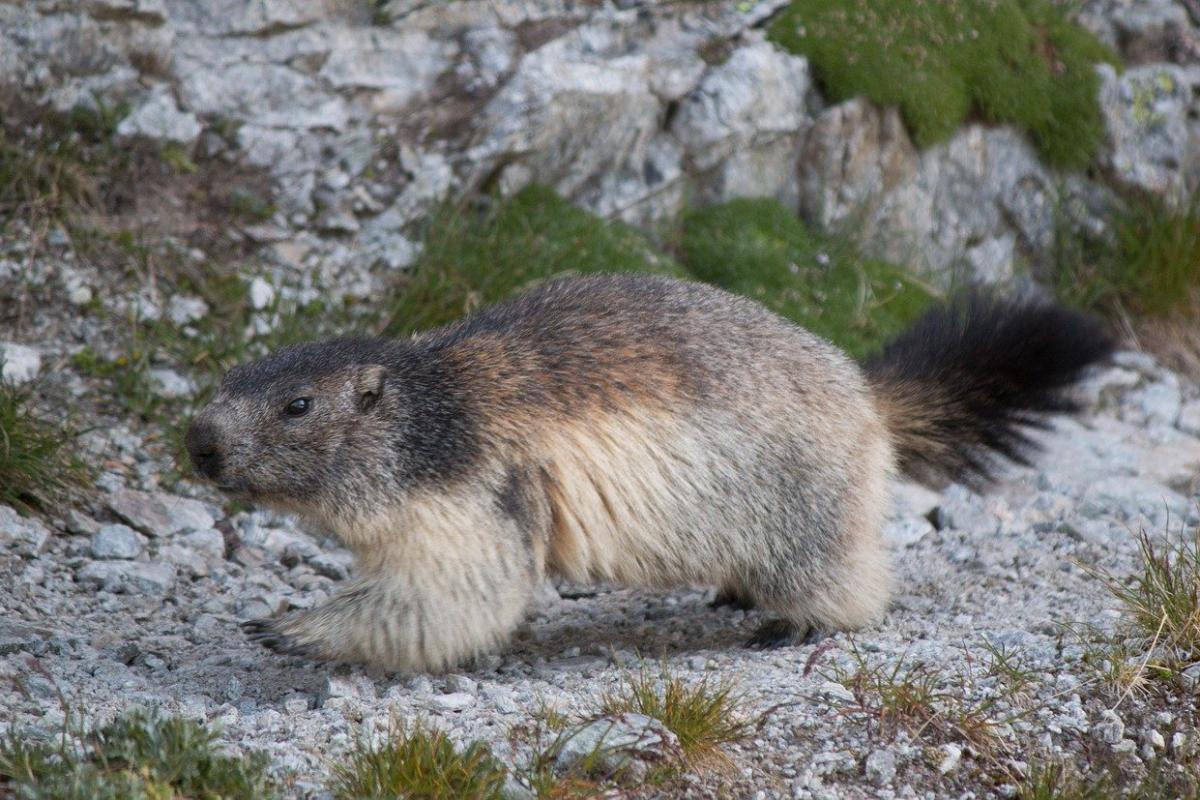
- Name: Alpine marmot
- Scientific name: Marmota marmota
- Conservation status:
The alpine marmot is a large species of squirrel native to Central and southern Europe. It inhabits the mountainous areas, at heights of 800 to 3,200 m / 2,600 to 10,500 ft. While it had disappeared from the Pyrenees, in the South of France, it was successfully reintroduced in 1948.
This marmot feeds on grasses and herbs, but also insects, spiders, worms, and grain. Most of the time, it eats young plants and holds them in its forepaws.
2. White stork
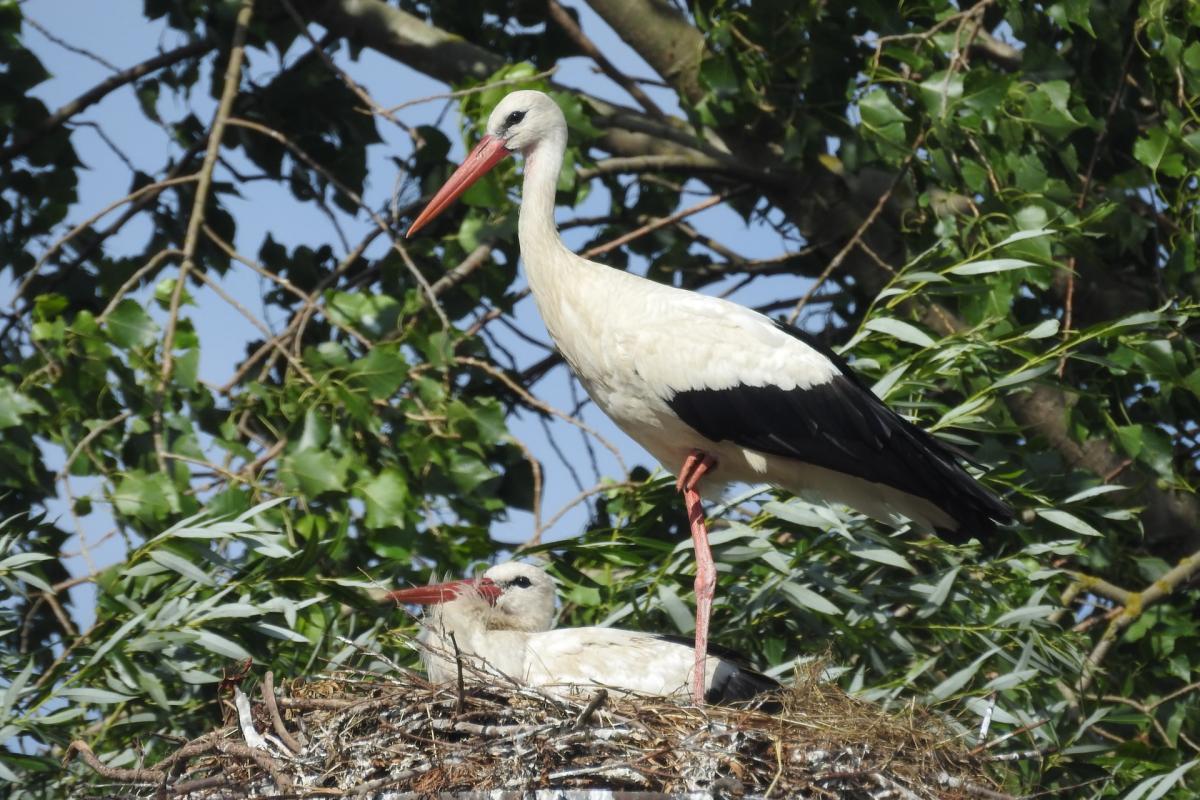
- Name: White stork
- Scientific name: Ciconia ciconia
- Conservation status:
The white stork is a species of large bird native to Europe, Asia, and Africa: it spends half the year in Eurasia and winters in Africa.
While it looks harmless, this bird is actually a carnivore that feeds on insects, fish, reptiles, small mammals, small birds, and amphibians. It finds its food in shallow water or on the ground, and strikes with its sharp beak! It is considered of least concern but is still threatened by farming methods and industrial expansion.
3. Martinique fer-de-lance
- Name: Martinique fer-de-lance
- Scientific name: Bothrops lanceolatus
- Conservation status:
Maybe you did not know it, but France still rules over a handful of territories, including Martinique. The island is located in the eastern Caribbean Sea and has amazing wildlife to offer, such as the Martinique fer-de-lance.
This species of pit viper is endemic to Martinique, and it is an ambush predator that feeds on rats, birds, rabbits, and lizards, among others. Its venom causes clotting, bleeding, swelling, and muscle damage.
4. Panther chameleon
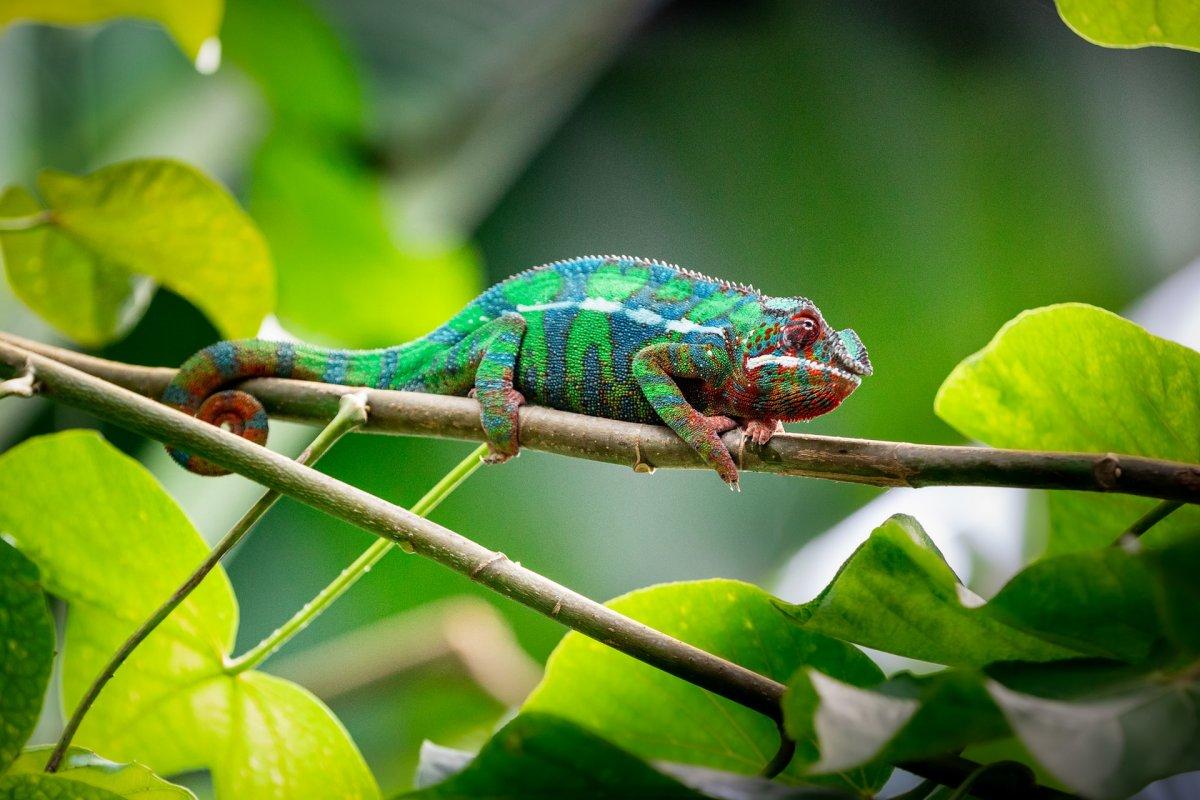
- Name: Panther chameleon
- Scientific name: Furcifer pardalis
- Conservation status:
Another island that is part of France is Réunion. It is located to the East of Madagascar, in the Indian Ocean.
There, you will find the panther chameleon. This animal, native to Madagascar, was introduced to Mauritius and Réunion, and it can change colors on a restricted range, contrary to the common belief. Sadly, the panther chameleon has a short lifespan of 5 years for males and 3 years for females.
5. Fin whale
- Name: Fin whale
- Scientific name: Balaenoptera physalus
- Conservation status:
The fin whale, also known as the finback whale, the common rorqual, the razorback whale, or the herring whale, is a species of cetacean native to every ocean on the planet. It is the second-longest cetacean after the blue whale and was confirmed to reach 25.9 m / 85 ft.
This whale was heavily hunted throughout the 20th century, which is why it is now an endangered species. In only 71 years, more than 750,000 individuals were taken down in the Southern Hemisphere only!
6. Mediterranean monk seal
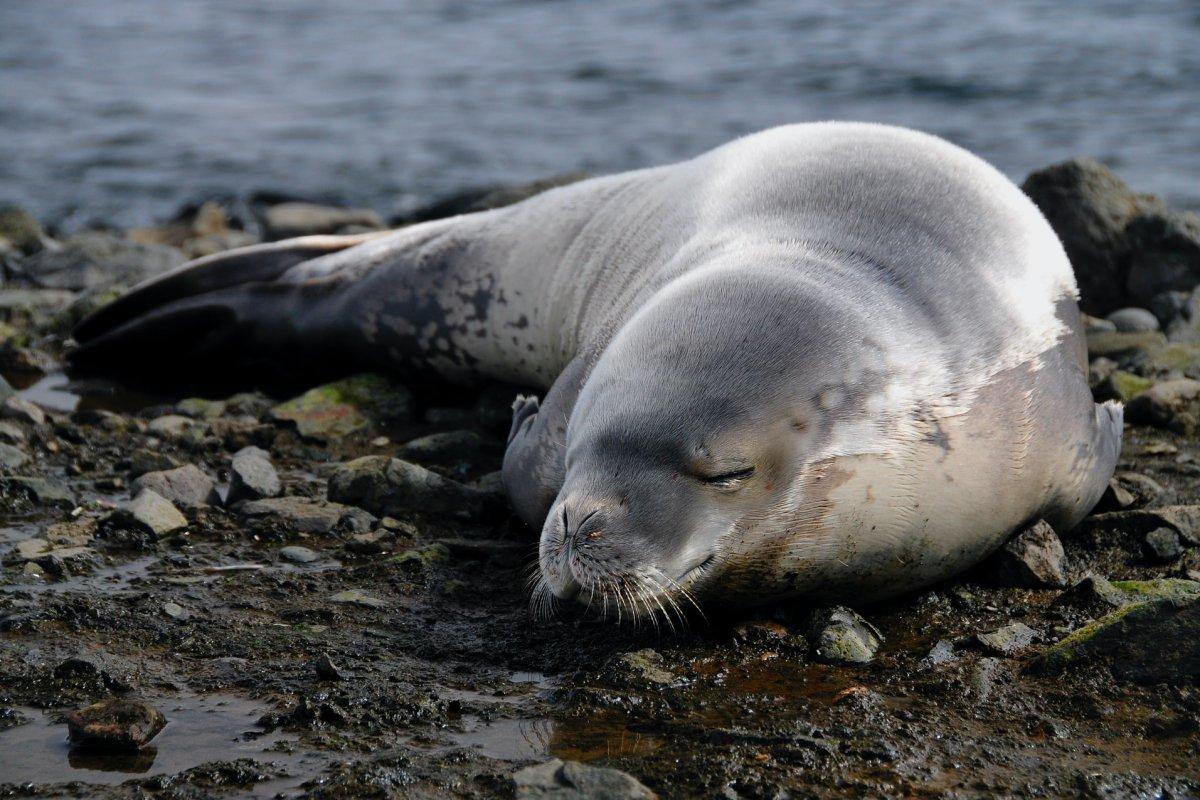
- Name: Mediterranean monk seal
- Scientific name: Monachus monachus
- Conservation status:
The Mediterranean monk seal is a species of seal that is seriously endangered. Fewer than 700 individuals survive in 3 or 4 scattered populations across the Mediterranean. In fact, it is most likely the world’s rarest pinniped species!
This seal is a diurnal animal that feeds on a wide range of mollusks and fish, such as squid, octopus, and eels. Over time, its habitat has changed from open beaches to sea caves with underwater entries, due to human disturbance.
7. Osprey
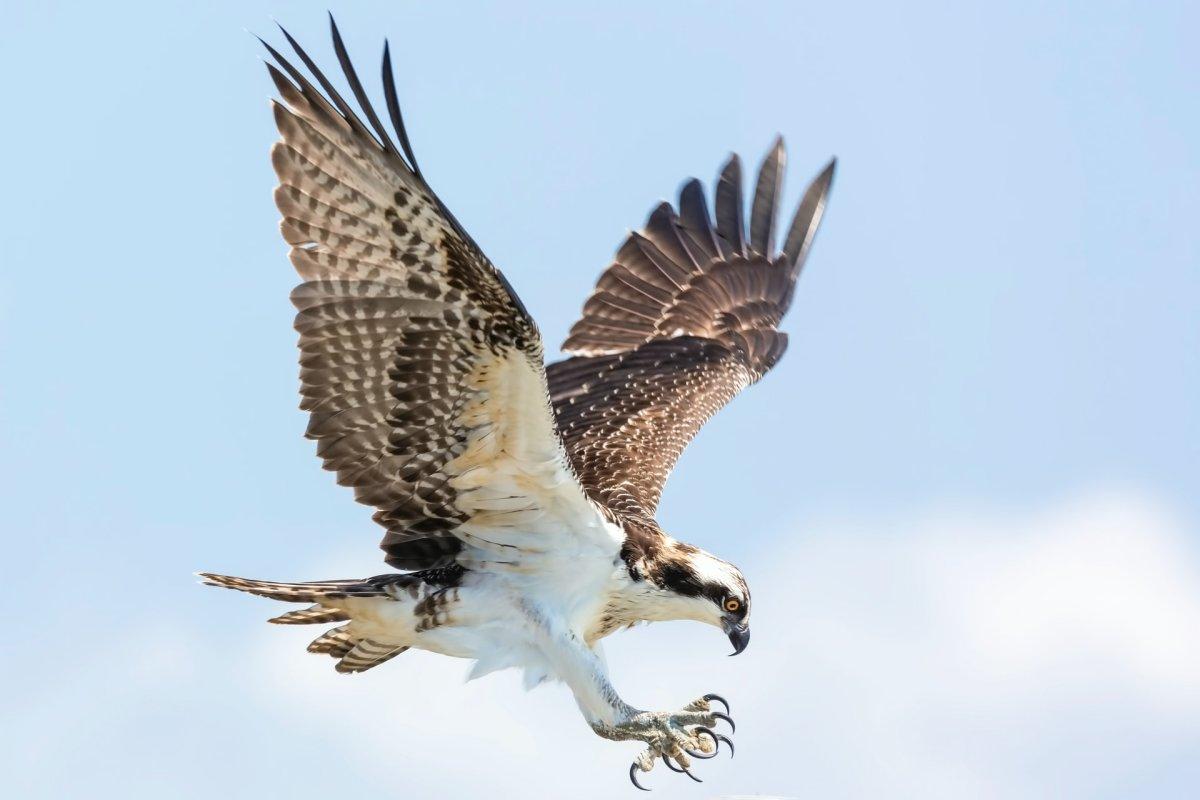
- Name: Osprey
- Scientific name: Pandion haliaetus
- Conservation status:
The osprey, also known as the fish hawk, the river hawk, or the sea hawk, is a species of bird of prey with a very wide range. It is a diurnal fish-eating bird that lives in a variety of habitats, as long as they have a body of water and enough food.
As its other names imply, its diet is almost exclusively made of fish. Because it has a unique behavior when it comes to hunting and assisting in catching prey, it has been given its own genus.
8. European badger
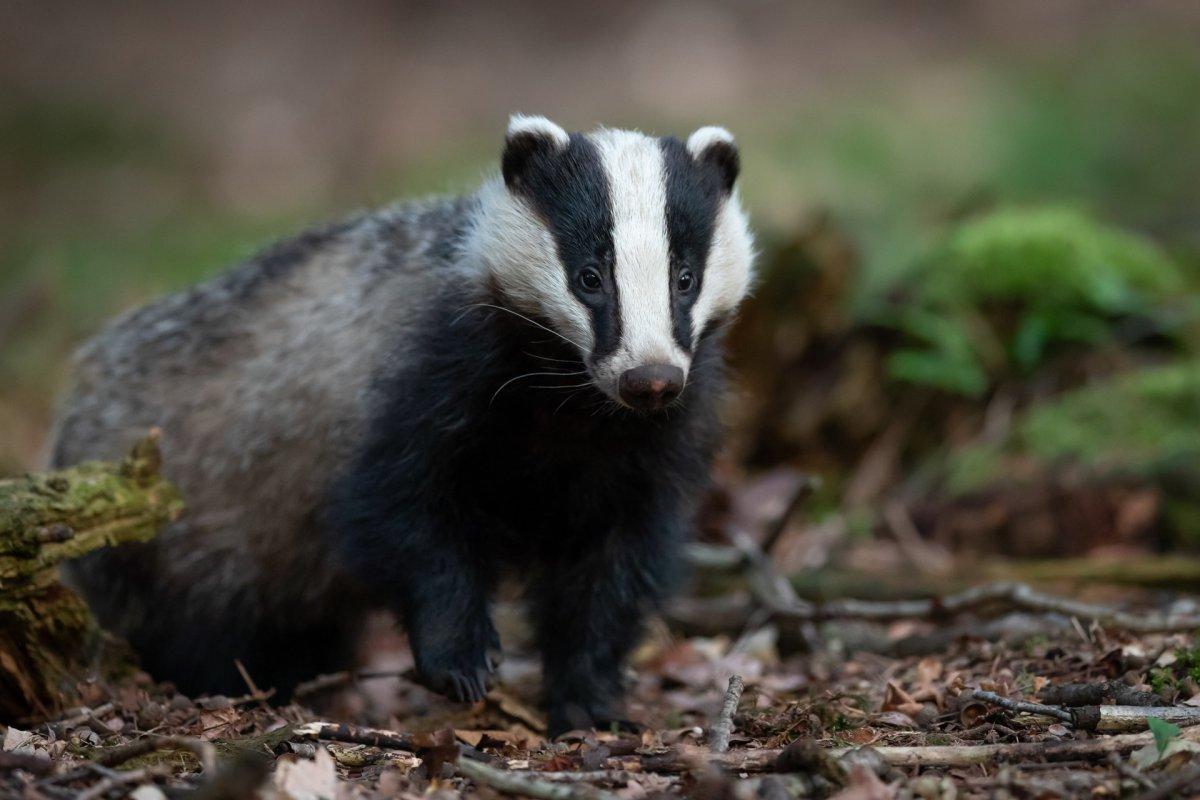
- Name: European badger
- Scientific name: Meles meles
- Conservation status:
The European badger is a species of badger native to all of Europe and the Middle East. Despite being classified as a carnivore, it is actually more of an omnivore, as it feeds on almost anything, from cereals and tubers to insects, plants, mammals, and even carrion.
It is a social animal that sleeps during the day within its territorial range. The badger is notorious for being quite aggressive when threatened, which is why it has been used in the illegal sport of badger-baiting.
9. Pyrenean ibex
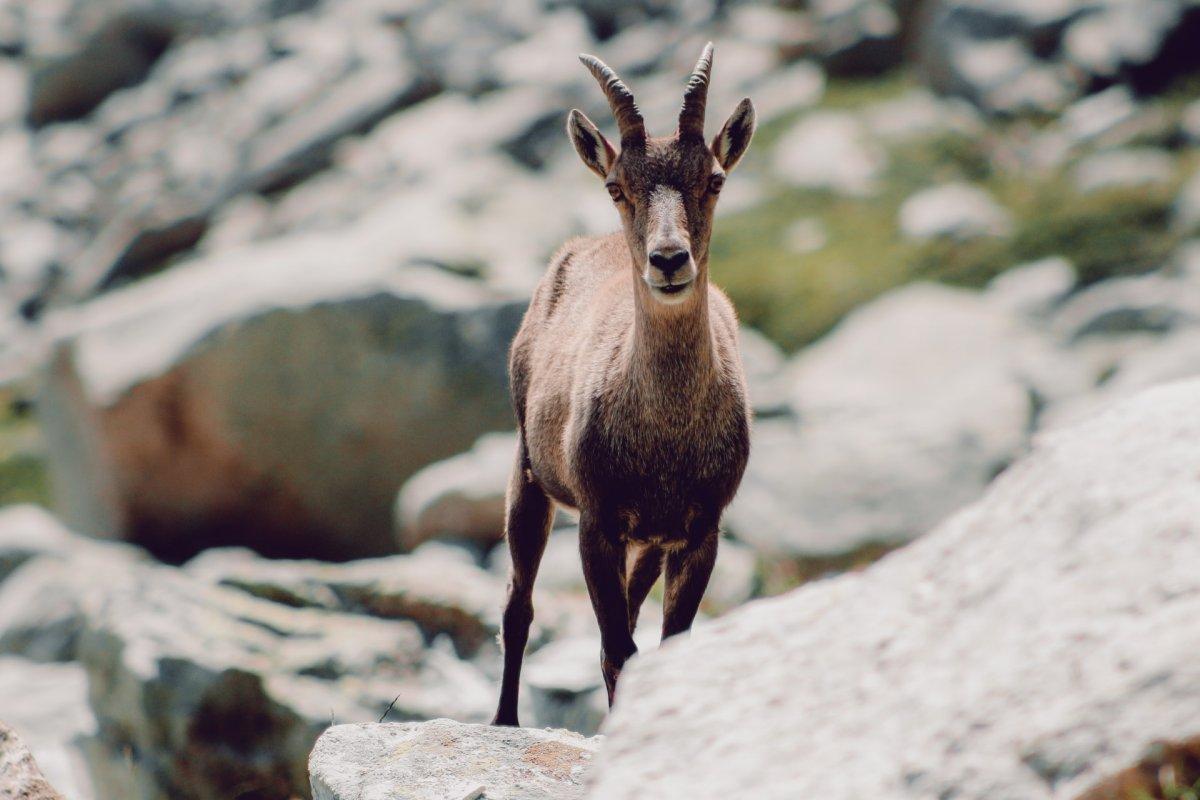
- Name: Pyrenean ibex
- Scientific name: Capra pyrenaica pyrenaica
- Conservation status:
The Pyrenean ibex, also known as the bouquetin (in French), the herc (in Catalan), or the bucardo (in Spanish), was a species of ibex endemic to the Pyrenees.
This wild goat was quite common in the past, and became extinct in 2000, while other subspecies have survived. Interestingly enough, a cloning attempt happened in 2003, in hopes to revive the species, but it failed as the specimen immediately died due to a lung defect.
10. Wild boar
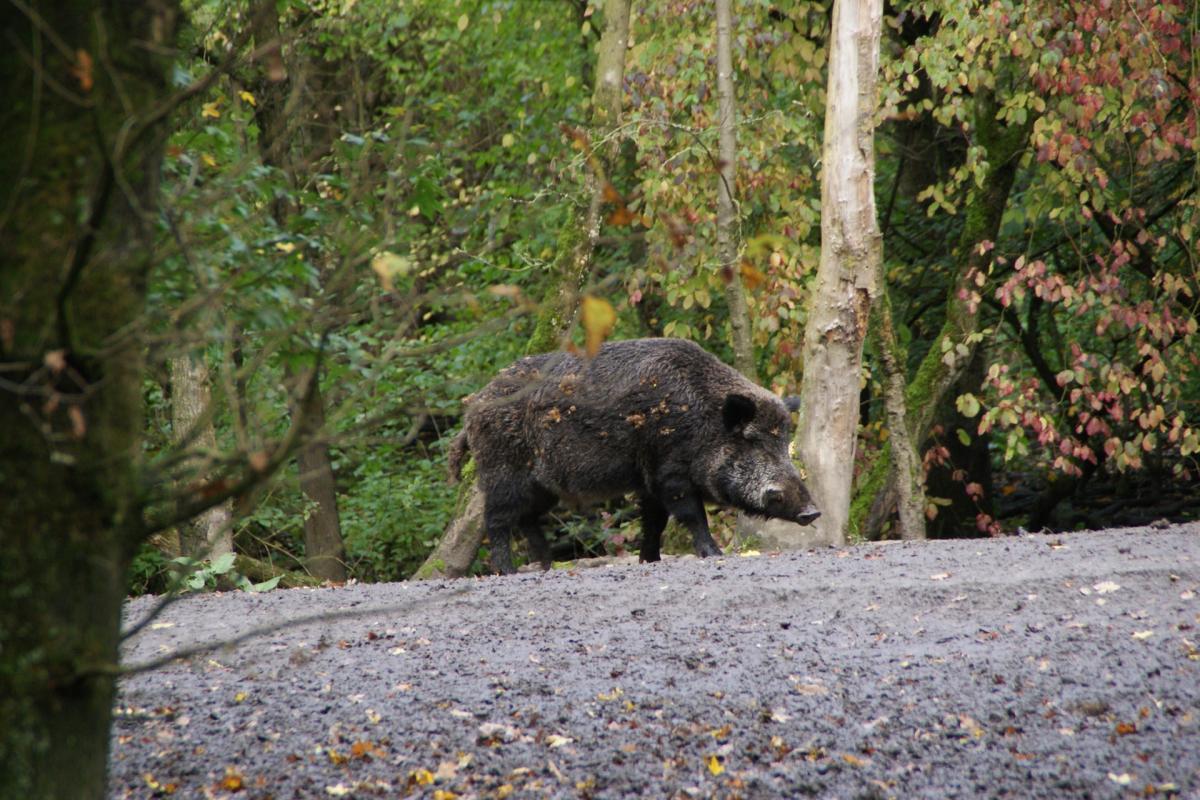
- Name: Wild boar
- Scientific name: Sus scrofa
- Conservation status:
The wild boar, also known as the Eurasian wild pig, the wild swine, or the common wild pig, is one of the most widespread and common animals in not only France but also the rest of Europe. It has even been introduced to the Americas and Oceania.
Thanks to its large numbers, very wide range, stable population, and most importantly adaptability to a variety of habitats, the wild boar are under no danger of extinction whatsoever.
11. European rabbit
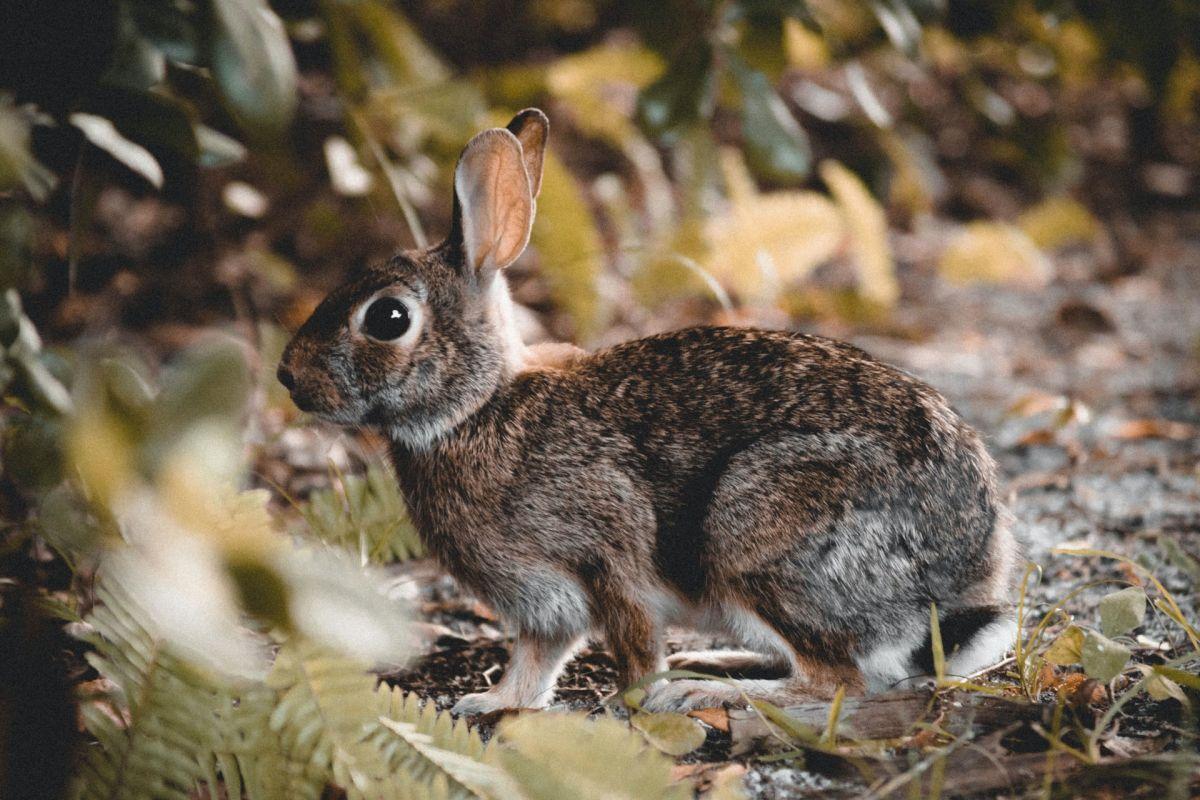
- Name: European rabbit
- Scientific name: Oryctolagus cuniculus
- Conservation status:
The European rabbit, also known as the coney, is a species of rabbit native to western France, the Iberian Peninsula, and the northern Atlas mountains in Africa. After being widely introduced elsewhere, it has caused devastating effects on local biodiversity, and it is on the decline in its native range because of overhunting and habitat loss.
This rabbit is known for digging networks of burrows, where it spends most of its time.
12. European hedgehog
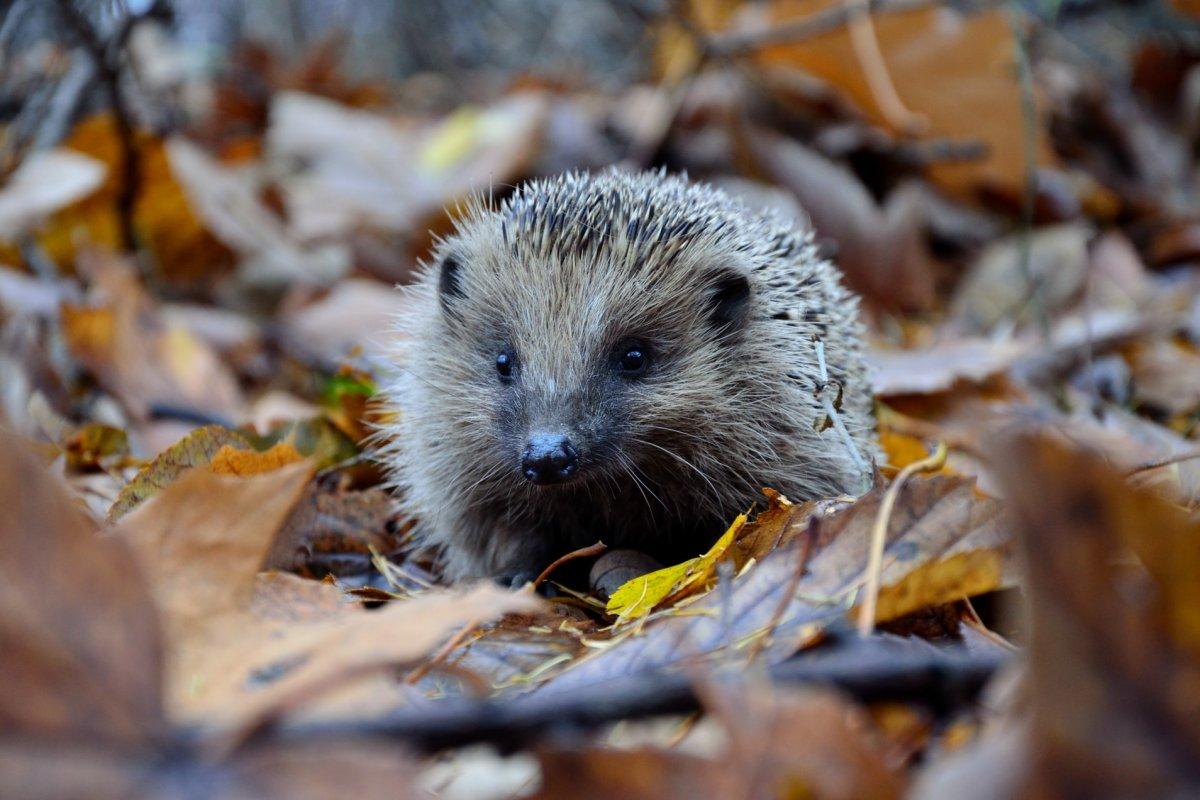
- Name: European hedgehog
- Scientific name: Erinaceus europaeus
- Conservation status:
The European hedgehog, also known as the common hedgehog, is a species of hedgehog native to Europe, from Italy and the Iberian Peninsula to the northern Scandinavian countries.
This species is very common and widespread and can be found in a large variety of habitat types. Usually, you will fairly easily see one in gardens, where it is particularly appreciated for its gentle nature and the fact that it feeds on a range of garden pests.
13. Leatherback sea turtle
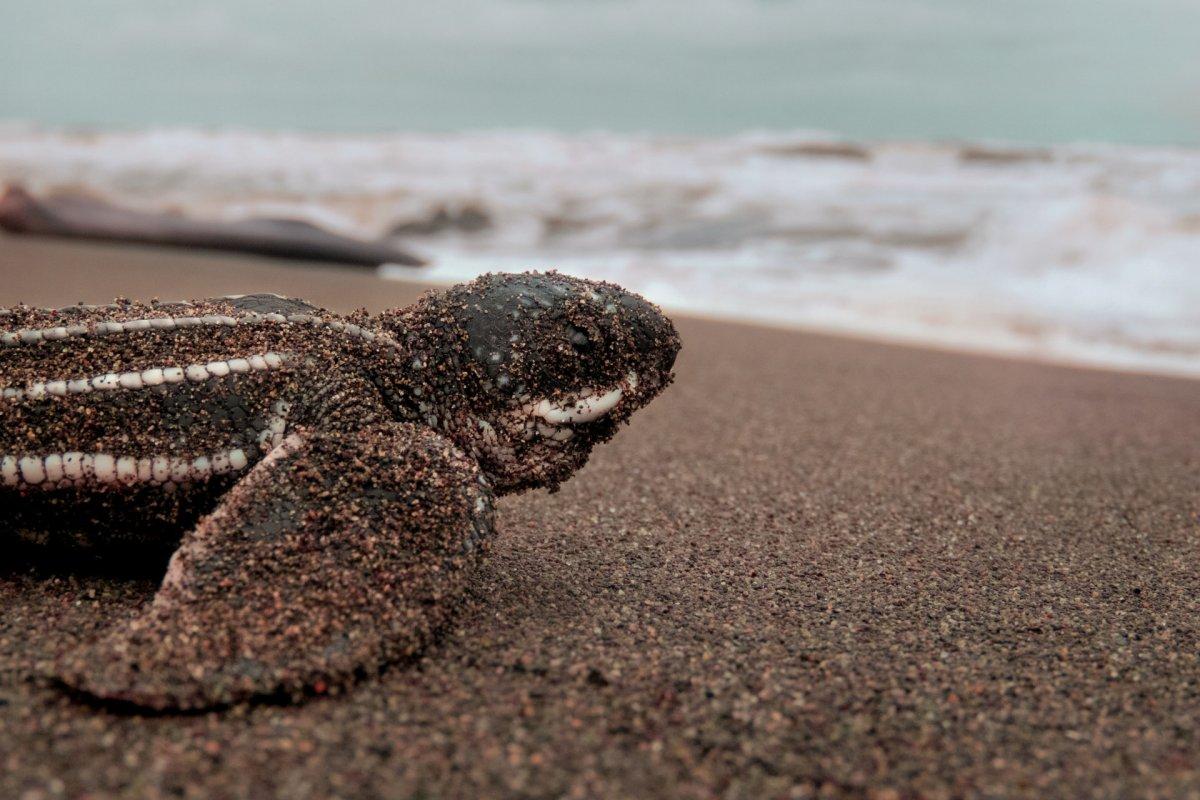
- Name: Leatherback sea turtle
- Scientific name: Dermochelys coriacea
- Conservation status:
The leatherback sea turtle, also known as the lute turtle or the leathery turtle, is definitely the most impressive species of turtle in the world. It is the largest of them all, and the heaviest non-crocodilian reptile, reaching weights of up to 600 kg / 1,322 lbs and lengths of up to 2 m / 6.5 ft!
Unlike other sea turtles, the leatherback sea turtle does not have a bony shell, but rather a carapace covered by oily flesh and leather-like skin, which is where it gets its name from.
14. Eurasian beaver
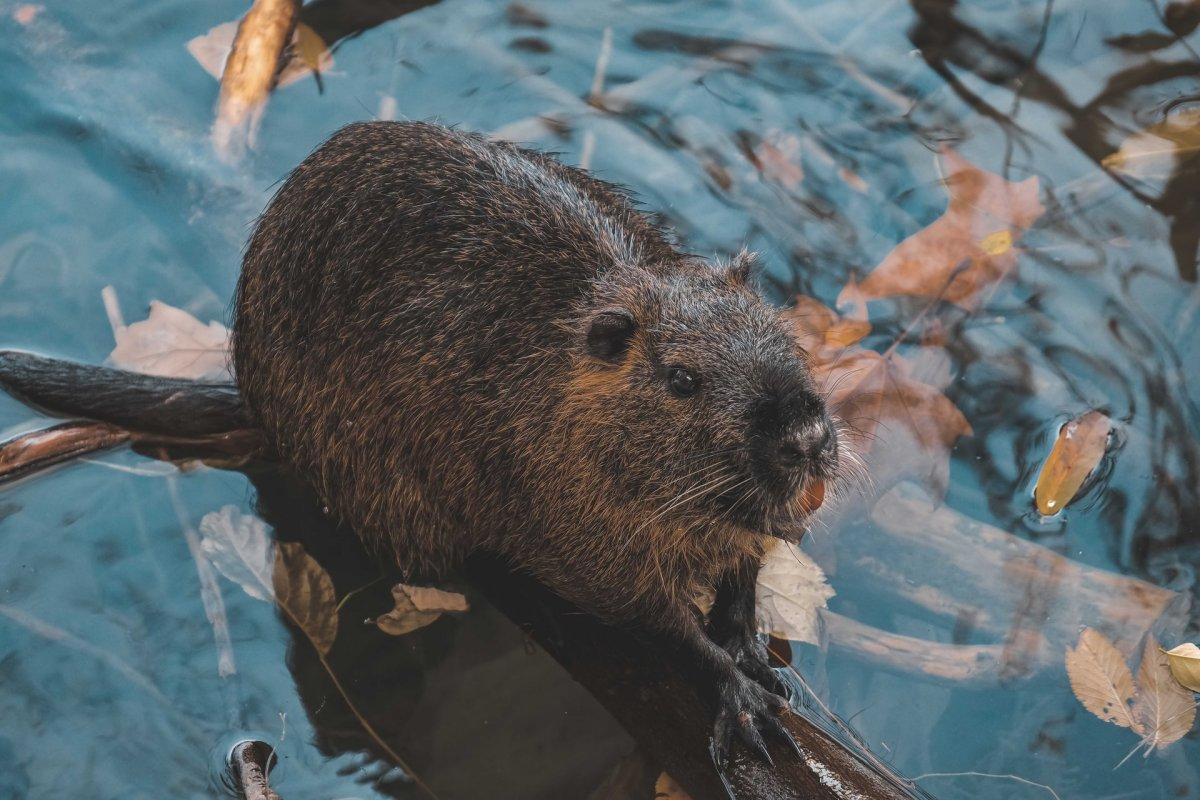
- Name: Eurasian beaver
- Scientific name: Castor fiber
- Conservation status:
The Eurasian beaver is a species of beaver that almost became extinct. After being hunted to near-extinction at the beginning of the 20th century (only 1,200 individuals were left), it has been slowly but steadily reintroduced over much of its former range. Now, it is thriving and has recovered well in Europe. In Portugal, Turkey, and Moldova, it is extirpated though.
This beaver has a larger, less rounded head than its more famous North American counterpart, and it is a keystone species that support the entire ecosystem it inhabits.
15. Bearded vulture
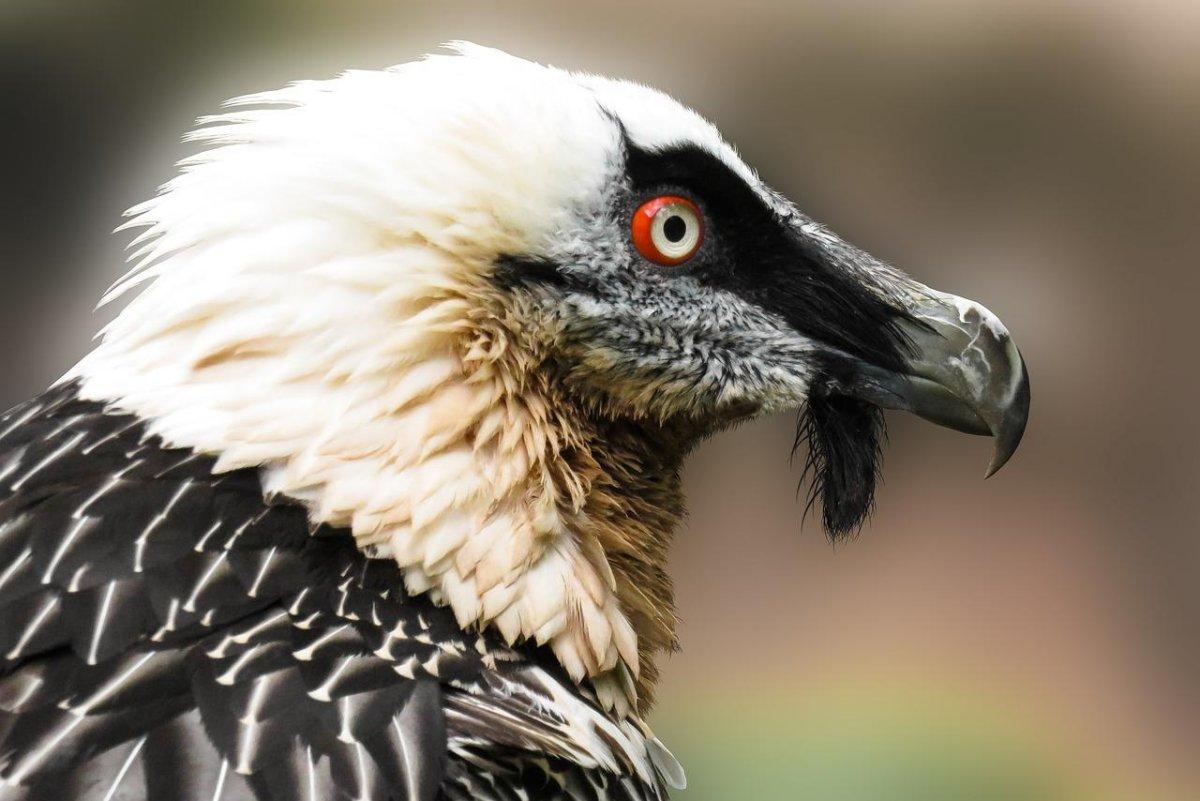
- Name: Bearded vulture
- Scientific name: Gypaetus barbatus
- Conservation status:
The bearded vulture, also known as the ossifrage or the lammergeier, is a very large species of bird of prey native to Europe, Africa, and Asia. It has a spectacular wingspan of up to 2.83 m / 9 ft 3 in, and Himalayan individuals tend to be slightly larger than others. Thanks to its long, narrow wings, it is unmistakable with other vultures.
Just like other vultures, the bearded vulture is a scavenger that largely feeds on mammals’ carcasses.
16. Golden eagle
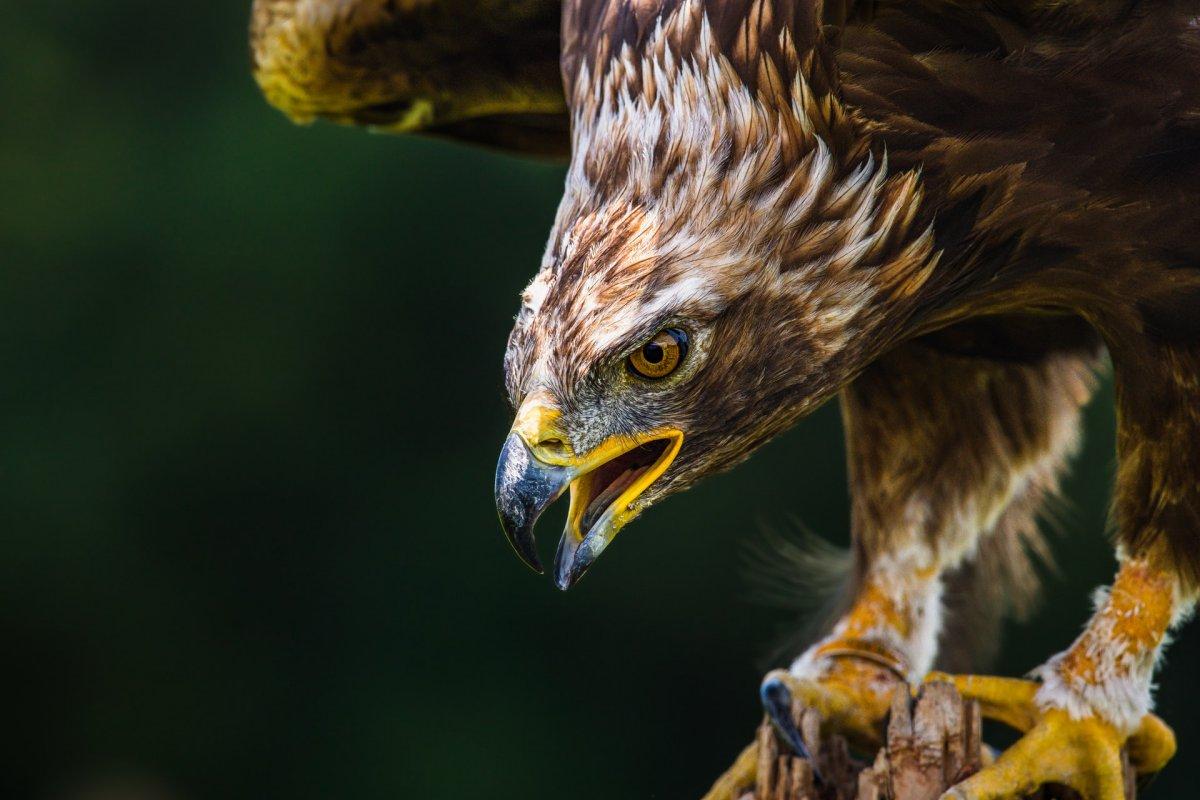
- Name: Golden eagle
- Scientific name: Aquila chrysaetos
- Conservation status:
The golden eagle is a species of bird of prey native to much of the Northern Hemisphere, except for desert or polar regions. In fact, it is the most widely distributed species of eagle on the planet, and one of the best-known birds of prey.
This dark brown bird feeds on small mammals such as hares, ground squirrels, and rabbits, and catches them with its sharp talons.
17. Short-finned pilot whale
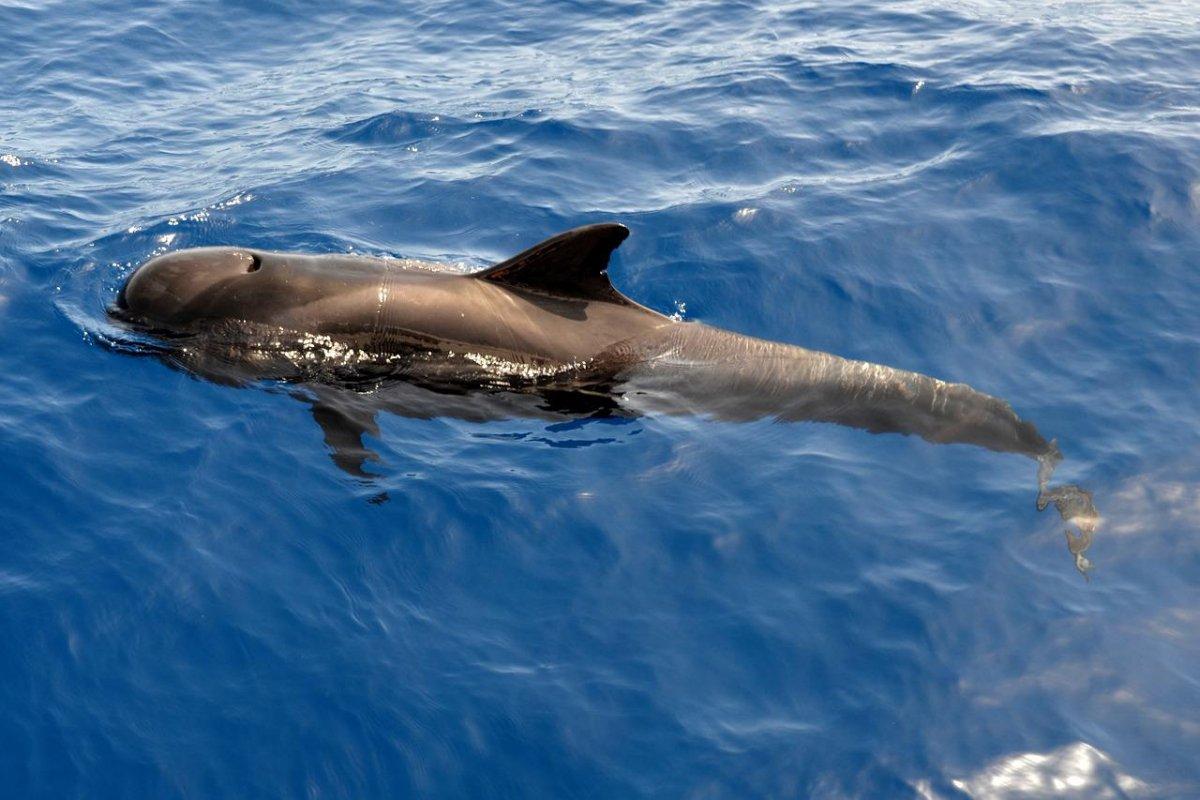
- Name: Short-finned pilot whale
- Scientific name: Globicephala macrorhynchus
- Conservation status:
The short-finned pilot whale is a species of whale native to temperate and tropical oceans. It has a global population of about 700,000 individuals, with 3 or 4 distinct populations in the Pacific, the Atlantic, and the Indian Ocean. Due to global warming, its range is slowly moving northward.
It usually travels in groups of 10 to 30 individuals and is highly social and playful. It has a social hierarchy with a dominant female, and is polygynous, with a 8:1 female/male ratio.
18. Common genet
- Name: Common genet
- Scientific name: Genetta genetta
- Conservation status:
The common genet is a small species of viverrid native to southwestern Europe and sub-Saharan Africa. It has a slender body that makes it look like a cat, as well as short legs and cat-like feet.
The genet is a solitary animal, active at night and at dusk. During the day, it rests in hollow trees and comes out right after the sunset to feed. While it is rare in open areas and marshes, it prefers oak and pine forests, as well as olive groves and rocky areas.
19. Western barn owl
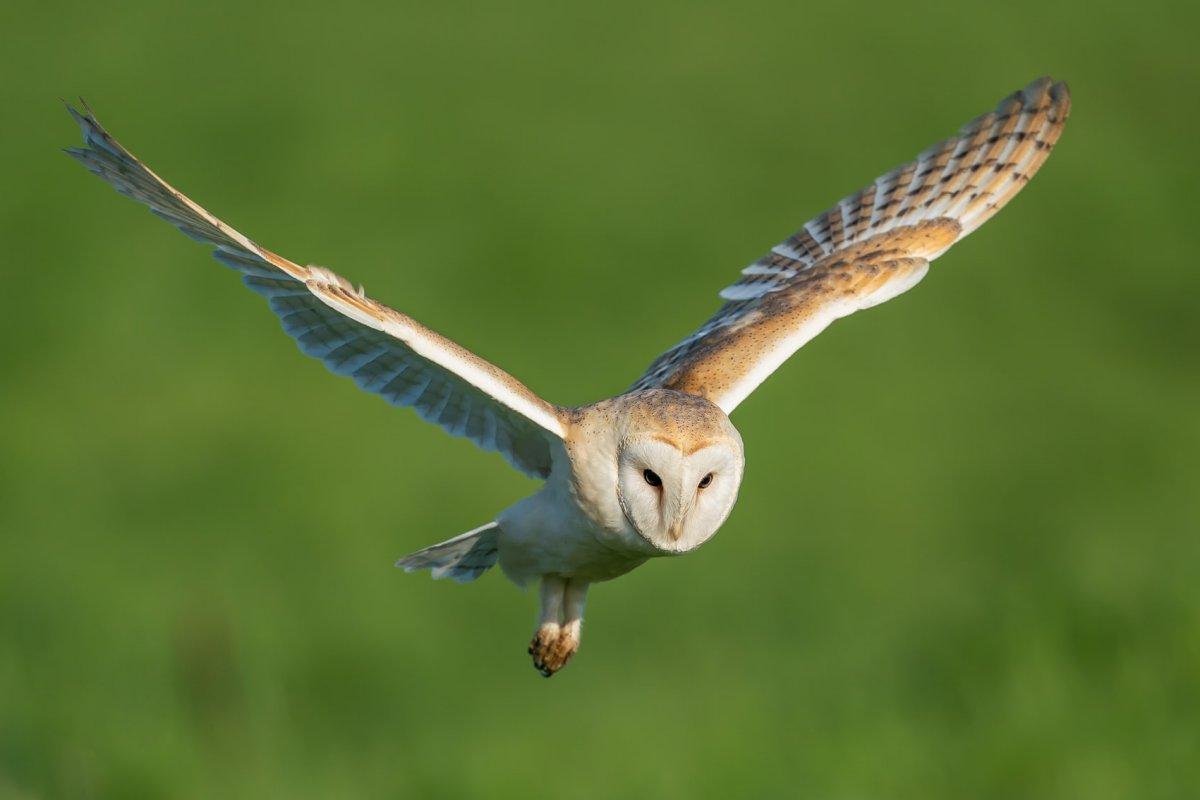
- Name: Western barn owl
- Scientific name: Tyto alba
- Conservation status:
The western barn owl is one of the subspecies of the barn owl, the most widespread species of owl. It is native to Eurasia and Africa and is nocturnal. Its fantastic sense of hearing is ideal to locate its prey in complete darkness.
Though it is not really territorial, it has a home range in which it forages. Depending on the area, the radius of the said area can be about 1 km / 0.6 mi or more.
20. Peregrine falcon
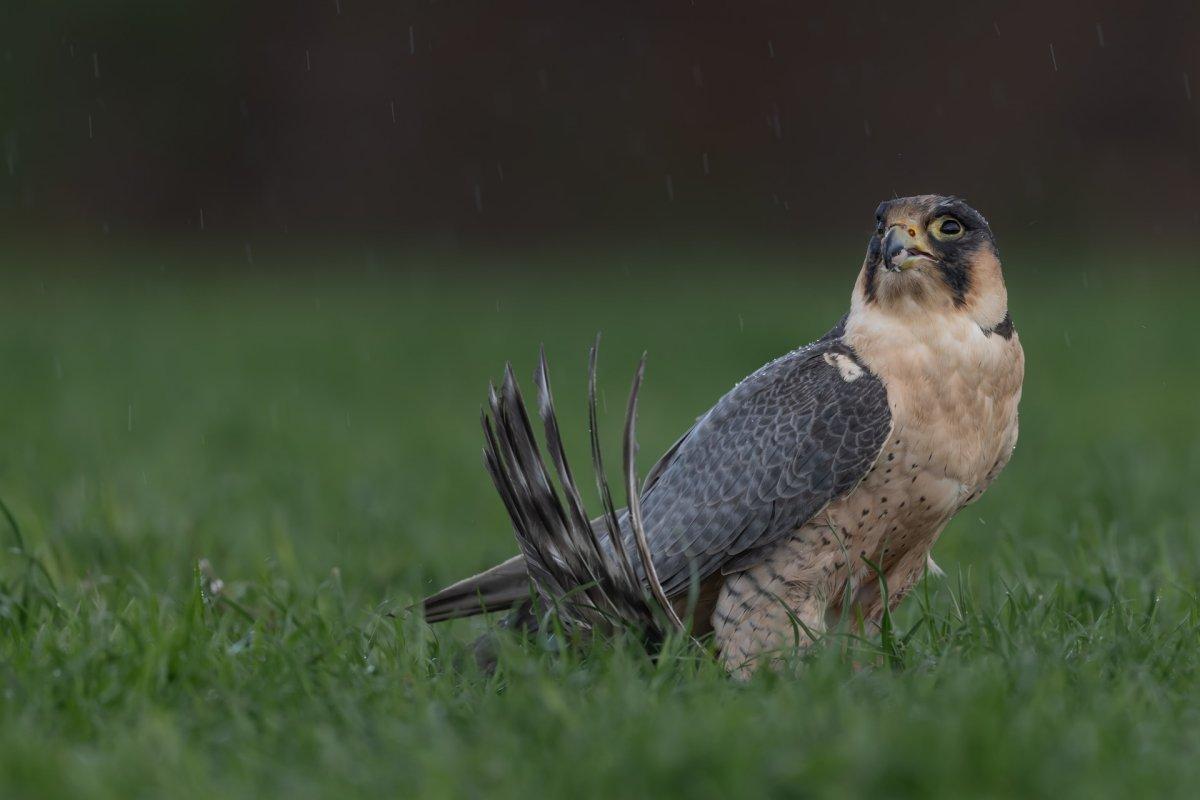
- Name: Peregrine falcon
- Scientific name: Falco peregrinus
- Conservation status:
The peregrine falcon, also known as the peregrine or the duck hawk, is a large species of bird of prey native to most of the Northern Hemisphere. Though it does not look very spectacular compared to eagles or vultures, it is very famous for one specific reason: it is the fastest animal on the planet, reaching speeds of over 320 km/h / 200 mph during its hunting stoop. Absolutely phenomenal!
21. Red fox
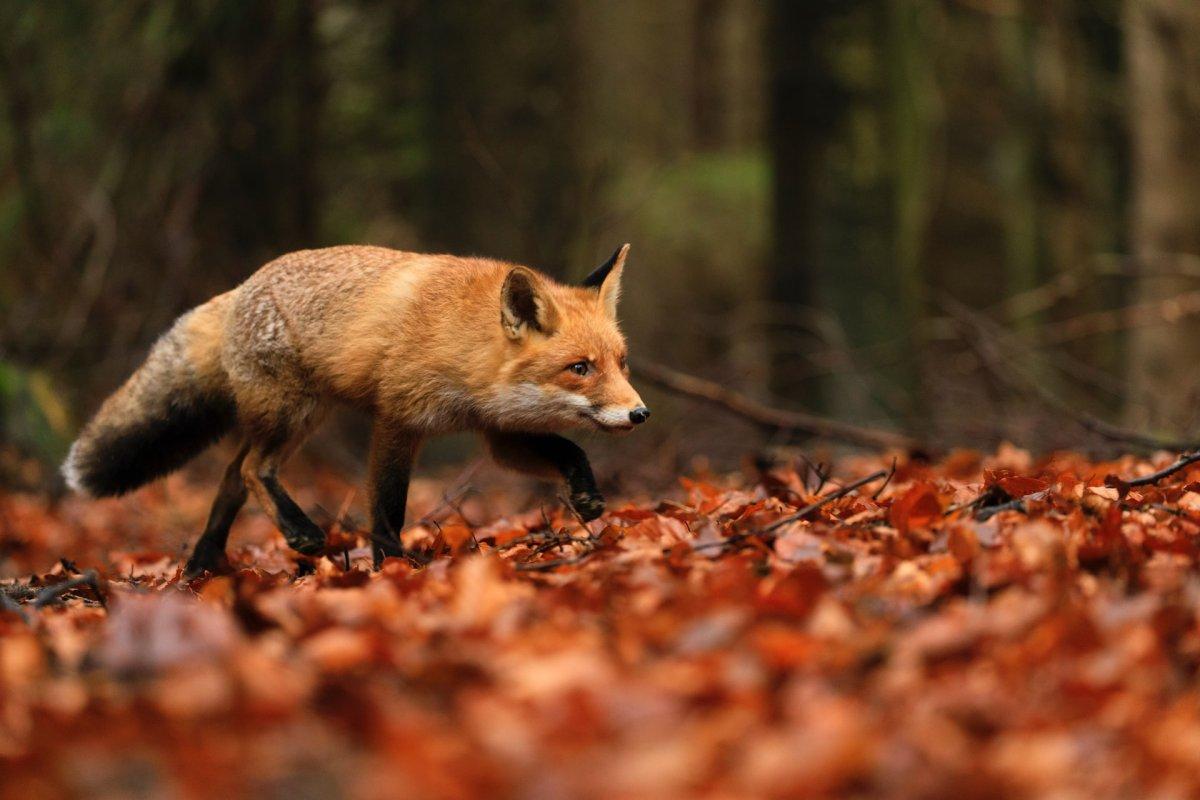
- Name: Red fox
- Scientific name: Vulpes vulpes
- Conservation status:
The red fox is one of the most widespread species of carnivores on the planet, as it can be found across all of the Northern Hemisphere. Interestingly enough, its range has actually increased thanks to human expansion, which is quite rare in the animal kingdom.
Due to its high adaptability and wide range, it is one of the most successful species in the world, and it usually lives in pairs or in small groups of a mated pair and their young.
22. Eurasian wolf
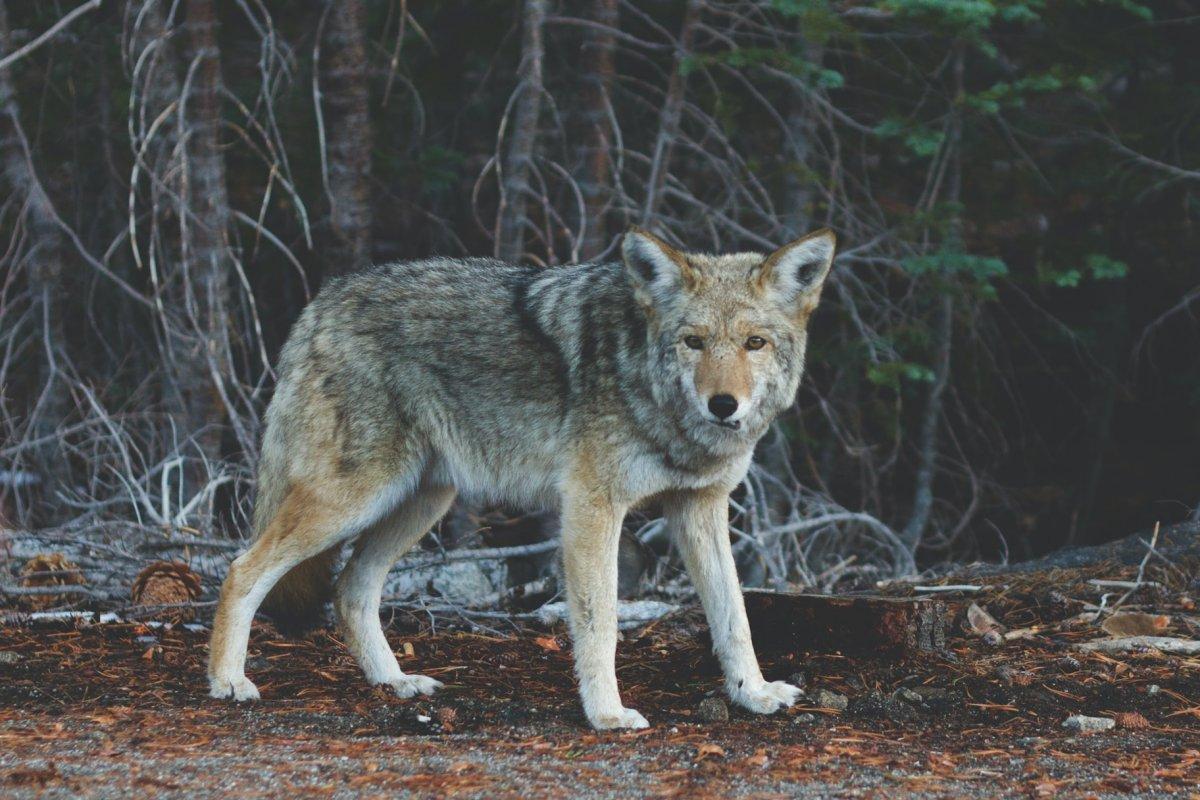
- Name: Eurasian wolf
- Scientific name: Canis lupus lupus
- Conservation status:
The Eurasian wolf, also known as the common wolf or the Middle Russian forest wolf, is a subspecies of the famous gray wolf native to Europe. It inhabits the forest and steppe zones of the continent, and it is the largest of Old World gray wolves.
The wolf has an important history of interaction with humans and is part of Eurasian mythology. In some cultures, it was seen as the lord of all animals and the only effective power against evil.
23. Common raven
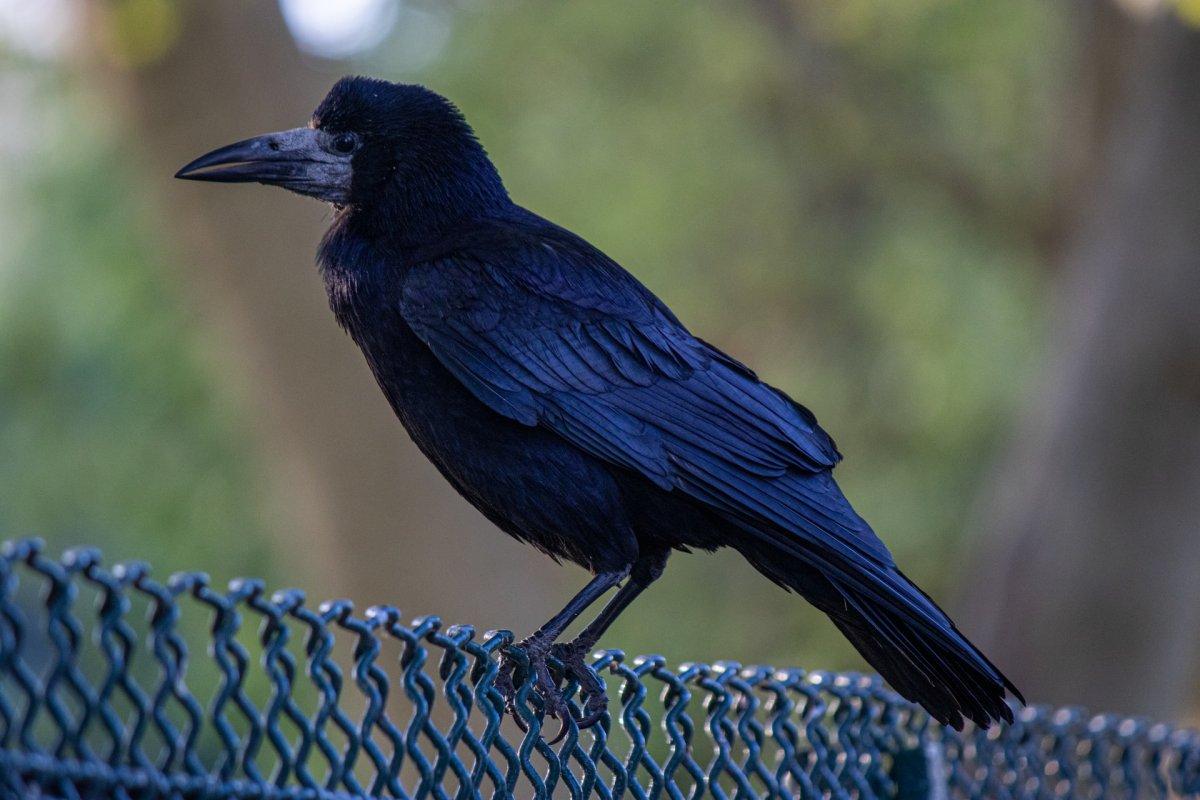
- Name: Common raven
- Scientific name: Corvus corax
- Conservation status:
The common raven, also known as the western raven or the northern raven, is a species of raven native to almost the entirety of the Northern Hemisphere. It has at least 8 subspecies, and it can live up to 23 years in the wild. While young ravens travel in flocks, they later mate for life and defend their territory.
This bird has coexisted with humans for thousands of years, and it was most of the time considered a pest.
24. Eurasian brown bear
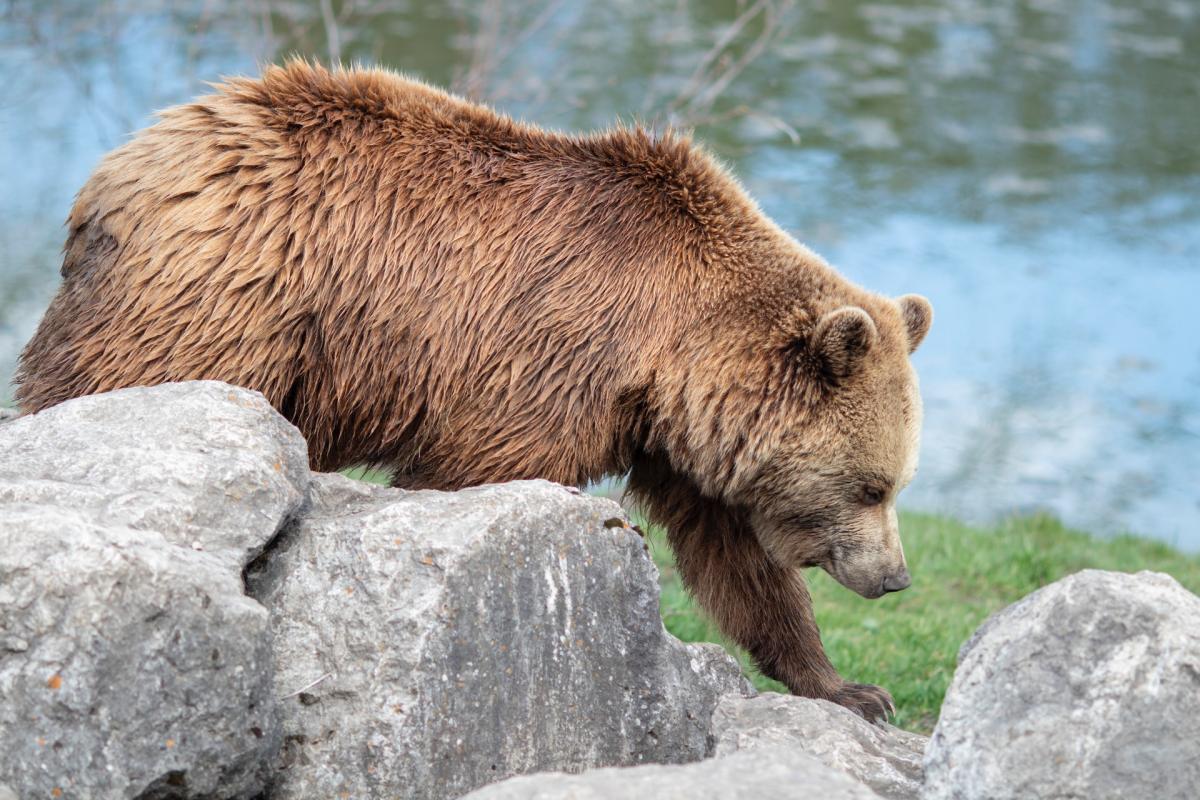
- Name: Eurasian brown bear
- Scientific name: Ursus arctos arctos
- Conservation status:
The Eurasian brown bear, also known as the common brown bear, is one of the most common subspecies of the brown bear, and, yet again, a very well-known animal in France.
In culture, the brown bear appears very frequently in fables and fairy tales, not only in France but also in the rest of Europe. It is also Finland’s national animal, present on Croatian coins and the symbol of Russian might.
25. Eurasian otter

- Name: Eurasian otter
- Scientific name: Lutra lutra
- Conservation status:
The Eurasian otter, also known as the river otter, the common otter, or the Old World otter, is a species of semi-aquatic mammal native to Eurasia. It is the most widely distributed member of the otter family, and it lives in coastal areas and waterways.
Its diet is mostly made of fish, whether it is in freshwater habitats or around the Mediterranean. In the winter, it can adapt and eat amphibians, insects, birds, and crustaceans.
26. Common raccoon dog
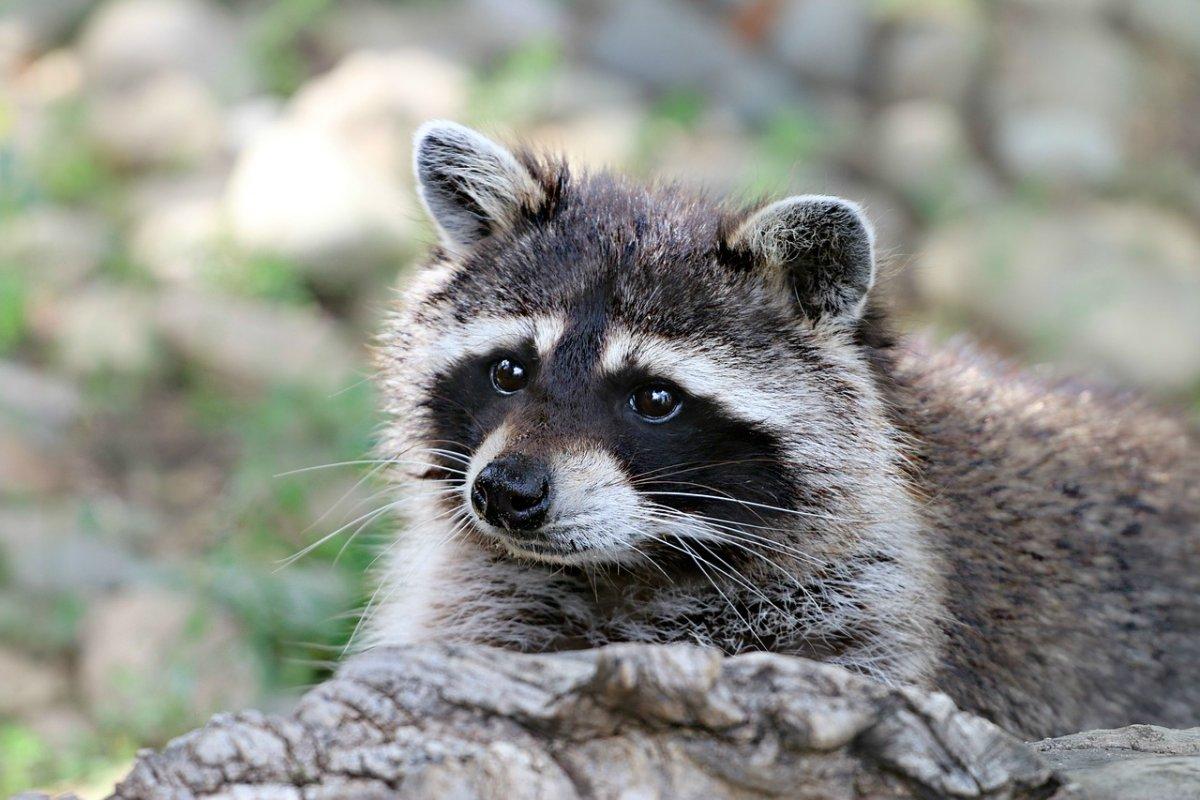
- Name: Common raccoon dog
- Scientific name: Nyctereutes procyonoides
- Conservation status:
The common raccoon dog, also known as the mangut, the neoguri, or the Asian raccoon dog, is a species of canid native to western Asia. Despite its name, it has nothing to do with a raccoon, but definitely looks like one: with a characteristic black face mask, the resemblance is striking.
This animal has been introduced to Europe due to the fur trade, where it is now considered an invasive species. It is therefore forbidden to import, breed, commercialize or release this species into the environment.
27. Red deer
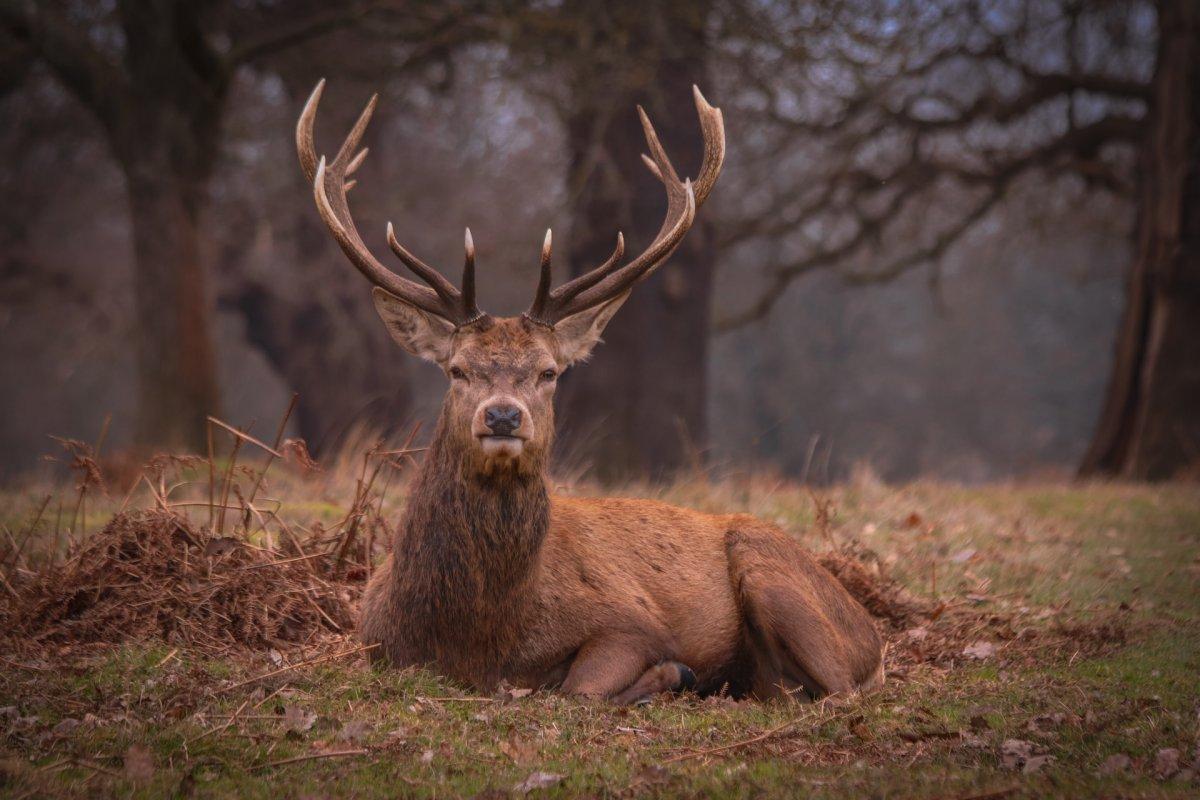
- Name: Red deer
- Scientific name: Cervus elaphus
- Conservation status:
And here is another very common and notorious animal species of France, the red deer. While males are known as stags or harts, females are called hinds. This animal is native to most of Europe, western Asia, and the Caucasus Mountains.
It is a ruminant animal that was once rare in some parts of the continent but never came close to extinction. Thanks to conservation and reintroduction efforts, its population even increased.
So there you have them, these were my 27 native animals of France. I hope you enjoyed this list and that you learned something new today.
In case you want to learn more about animals in the country, feel free to keep reading, as I still have lots of things to tell you about:
Endangered Animals of France
This is definitely the saddest part of the list, but it is very important to raise awareness. Because of this, let’s go through the list of endangered animals in France.
Here are the animals in danger of extinction in France.
- Coregonus bezola
- Houting
- Coregonus fera
- Coregonus hiemalis
- Sardinian Pika
- Kemp’s ridley
- Common blue skate
- Atlantic sturgeon
- Sand tiger shark
- Great hammerhead
- and 22 more…
- Spinetail devil ray
- Basking shark
- Mediterranean monk seal
- Steppe eagle
- Blue whale
- and 23 more…
To see the full list of endangered species in France, head over to the International Union for Conservation of Nature’s Red List.
What is the National Animal of France?
The national animal in France is the rooster.
You must have seen France’s national football team jerseys, with a rooster on top. The animal is a very important symbol and has been domesticated early in history. It is a prominent figure in European literature and folklore and is also one of the most famous French dishes: the “coq au vin”, which is rooster with wine sauce.
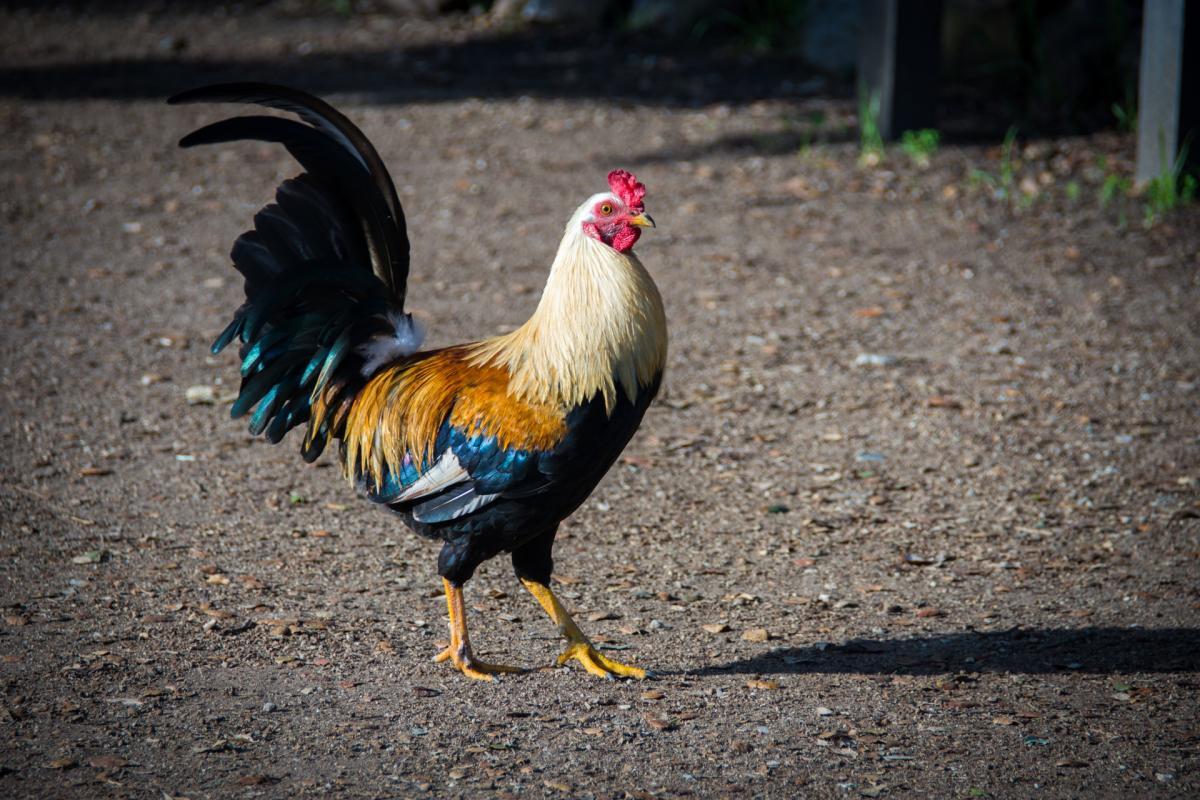
How Many Animals Native to France?
What is the diversity of native animals in France?
Let’s look at the total number of species of Chordata (mammals, birds, fishes, and reptiles).
Total number of animal species in France: 1,738 (3,149 in total in Europe)
More About Animals in the World!
Loved these France wildlife facts? Want to see what animals live in other countries?
Then check out these posts:
Or click here to see ALL the facts up on the blog! Spoiler alert: there’s A LOT of them.
Share the knowledge! Click on the buttons below to share information about these famous animals in France with your friends, and help them learn more about the world 🙂
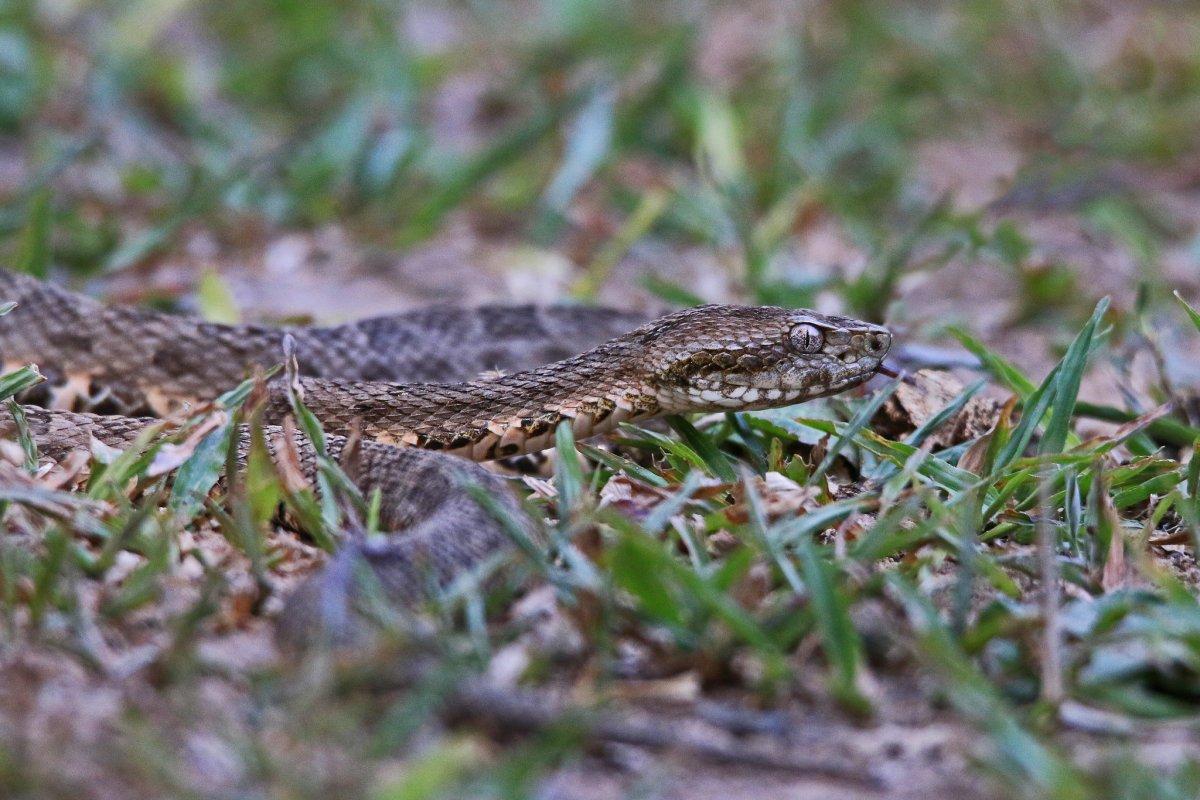
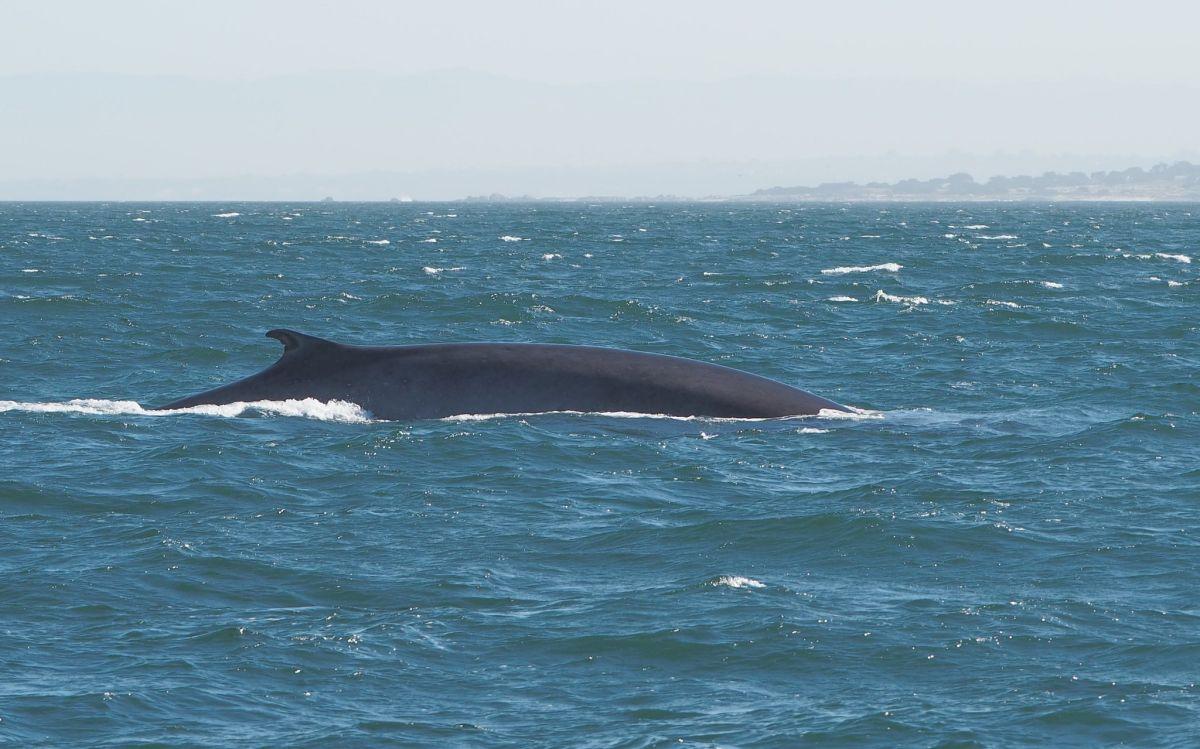
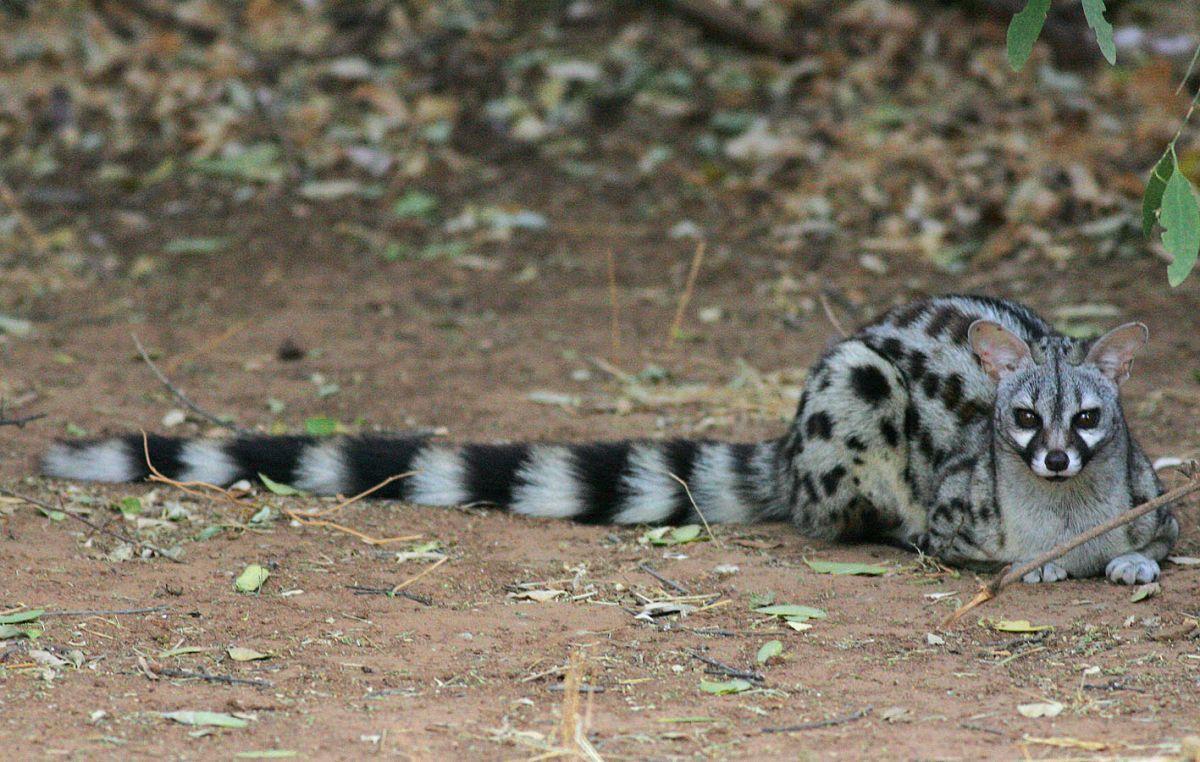

![18 Wild Animals in Maldives [Wildlife in Maldives]](https://www.kevmrc.com/wp-content/uploads/2022/12/18-wild-animals-in-maldives.jpg)
![13 Wild Animals in Comoros [Wildlife in Comoros]](https://www.kevmrc.com/wp-content/uploads/2022/12/13-wild-animals-in-comoros.jpg)
![18 Wild Animals in Congo [Wildlife in Congo]](https://www.kevmrc.com/wp-content/uploads/2022/12/18-wild-animals-in-congo.jpg)